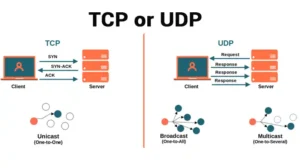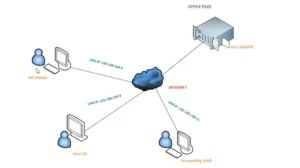Virtual Private Networks (VPNs) have become integral parts of our digital lives, providing a secure way to connect remote networks. VPNs may use different methods and operate at different layers to establish and maintain an encrypted network tunnel.
Speaking of layers, is VPN a Layer 2 or Layer 3 technology? In short, the answer is both. But, what do these layers mean, after all? This article is an attempt to answer these questions, exploring the benefits and drawbacks of Layer 2 and Layer 3 VPNs. We shall discuss from the ground up, including a brief overview of the OSI model. So, let’s get started.

The OSI Model: A Brief Overview
The OSI (Open Systems Interconnection) model is a conceptual framework that demonstrates how different networking protocols and technologies operate. It divides networking into seven layers that help ensure efficient and reliable data flow. The layers are:
- Physical Layer
- Data Link Layer
- Network Layer
- Transport Layer
- Session Layer
- Presentation Layer
- Application Layer
Each of these layers has specific functions. However, when talking about VPNs, we are primarily concerned with the Data Link Layer (Layer 2) and Network Layer (Layer 3).
Layer 2 (Data Link Layer) VPN
The Data Link Layer, or Layer 2, is responsible for the physical addressing of devices on a local network. Generally, this layer deals with the organization and flow of data frames, transferring data between adjacent nodes. VPNs that operate at the data link layer are called Layer 2 VPNs.
Layer 2 VPNs create a virtual network that connects remote LANs over the internet. These encapsulate the entire data frame from the sender and transmit it over the network to the receiver, all while keeping the MAC address unchanged.
Therefore, Layer 2 VPNs offer seamless integration for services, such as voice-over IP and video conferencing. However, they often require more bandwidth compared to their Layer 3 counterparts. Point-to-Point Protocol and Ethernet over MPLS are examples of the Layer 2 VPN technology.
Layer 3 (Network Layer) VPN
The Network Layer is responsible for the logical addressing and routing of data between different networks. It uses routers to deal with IP addresses and the routing of packets across interconnected networks. Due to better scaling options, Layer 3 is the more common layer for VPNs to operate.
Layer 3 VPNs create secure connections over the internet through encryption and encapsulation of data packets on an IP level. Besides, they are more versatile than Layer 2 VPNs as they allow networks not necessarily of the same type to connect with each other. So, connections between LANs and individual devices are also possible.
Moreover, Layer 3 VPNs eliminate the need for a connection between each router on the client end. Examples of Layer 3 VPN technologies include IPsec VPNs, SSL VPNs, and MPLS VPNs.
Verdict: Is VPN a Layer 2 or Layer 3 Technology?
As you can probably tell by now, VPNs can operate at both Layer 2 and Layer 3, while Layer 3 VPNs remain the commonly used option.
However, Layer 2 VPNs have their use cases, especially when extending a LAN-like environment geographically. Layer 3 VPNs, on the other hand, are more versatile and provide encrypted connections at the network layer. Thus, they are more suitable for site-to-site connectivity.
Frequently Asked Questions
What layer is IP VPN?
Since the Network Layer (Layer 3) is where IP routing occurs, IP VPN is a Layer 3 service. It lets you establish a secure, private network using the public IP.
Is VPN a Layer 3?
We typically associate VPNs with Layer 3 as it operates at the third layer of the OSI model, the Network Layer. However, there are Layer 2 VPNs as well, although they are less common.
Is there a Layer 2 VPN?
Yes, there are Layer 2 VPNs that operate at the Data Link Layer of the OSI model and create virtual networks to extend or bridge remote LANs. Ethernet over Multiprotocol Label Switching (EoMPLS) and Virtual LAN (VLAN) solutions use Layer 2 VPN tech.
Conclusion
In conclusion, whether VPNs are Layer 2 or Layer 3 depends on the specific type of VPN in question. And the choice between these two will boil down to your network requirements. We hope this article has provided you with the necessary insights. If you have any questions, please do share them below. Your feedback is valuable!



